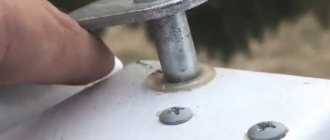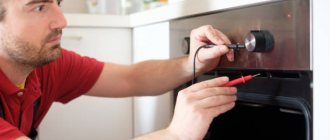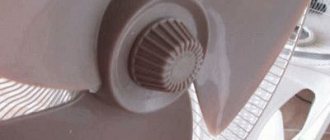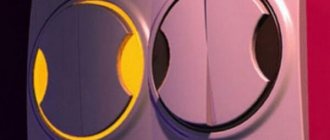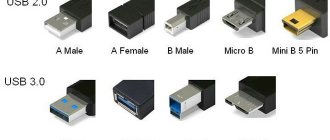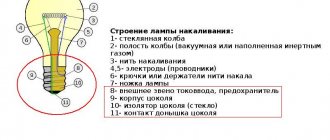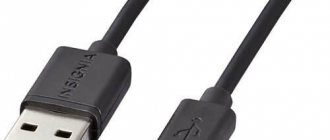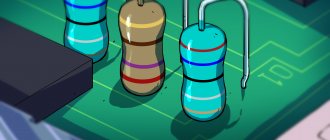Wireless charging is convenient: you throw the gadget on the stand and don’t need to connect anything. How cool it would be to use them to recharge electric cars!
And why are these strange scientists still unable to reproduce the technology of the great Tesla? They are strange, they have been working for a hundred years and there is no result.
This is exactly what almost everyone who thinks about modern electricity transmission technologies thinks. After all, without wires it’s faster, more convenient and more reliable (probably).
In practice, the transmission of small currents without wires is easily feasible over short distances. But as soon as high current, increased operating power or a long transmission distance are required, serious problems associated with the simplest physical laws begin.
And there are other intractable problems.
Nikola Tesla - a great teacher and a great deceiver
Most of the myths associated with the wireless transmission of electricity came to humanity from conspiracy theorists and the numerous myths they “digested” about the great Serbian-American inventor.
At the beginning of the twentieth century, through experiments in Colorado Springs, he demonstrated the possibility of transmitting an electromagnetic field at a distance, when he managed to light a light bulb at a distance of over three kilometers.
How did he do it? There is no official answer to this question, since the experimental methodology remained secret. But the famous records tell a completely different story.
But there are laws of physics and eyewitness impressions that speak of the incredible power of the transmitter (by the standards of time, of course): much more energy was spent than any light bulb needed.
And since there are no numbers, no data - isn’t this a myth, like many of his other developments? Tesla turned out to be the greatest hoaxer of his time, and modern “achievements” allow us to reveal this in all its glory.
Today they are trying to repeat his work with the help of investments from the New Zealand energy company Powerco by the local startup Emrod.
According to official information, the Emrod project provides for wireless energy transfer between the receiver and transmitter at a line-of-sight distance, which, in fact, can be tens of kilometers.
The created prototype is currently undergoing laboratory tests, and then field tests will begin, in which it is planned to transmit current with a power of up to 2 kW.
It is stated that due to new radio-absorbing materials, the efficiency of the receiving (rectifying) antenna has been increased to 100%, and the efficiency of the transmitting system is approaching 70%.
And then they got caught: nothing can have 100% efficiency . The laws of conservation of energy and the principle of causality have not been canceled: the transmitted wave cannot be completely converted into the required type of energy.
In the case of electricity and real engineering devices, everything is completely sad.
Principle of operation
Wireless electricity is literally the transfer of electricity over a distance without the use of wires. More often, this technology is compared with the transfer of information data, for example, with Wi-Fi or a mobile phone. Currently, special methods are being developed that will improve the process and make it smooth, without interruptions.
The basis for this technology is magnetism and electromagnetism, as well as simple operating principles. We are talking about having a system that consists of two coils - a transmitter and a receiver. Thanks to their joint work, the alternating magnetic field is regenerated, and then a non-direct current appears. The voltage in the receiver coil is used, for example, to charge a battery or power a smartphone. Electric current passing through the wire around the cable causes a circular field. The coil of wire that remains without current receives electric current from the first coil. This ensures inductive coupling.
Wireless charging has low efficiency
Today, there are three main power options for Qi wireless charging: 5 W, 7.5 W, 10 W. For comparison, the most common wired ones are 5 W, 10 W and 18 W.
The efficiency of wired power supplies that convert alternating current into direct current with specified parameters balances in the range from 50 to 85%. The rest is released by heat and is expressed by heating the elements of the electrical circuit.
The minimum condition for Qi to work with at least 5 W is a 10 W charger. Otherwise, nothing will work, charging will not work.
At the same time, to operate Qi with a power of 10 W, you need a power supply with support for QC 3.0 at 18 W or more powerful (it is often suggested to use a PD at 24 W).
The conversion efficiency is only 55%.
The transmission itself from the charger to the device is also a source of loss: the phone on average receives 4.2 W out of 5W (85% efficiency) and 9.1W out of 10W (about 90% efficiency).
From 18 W, make 9.1 W with an efficiency of 50% - is this now called “green, economical energy”?
Are there really no better technologies? Eat. Theoretically, the problem is simple: increase the voltage, reduce the current, reduce losses.
Only in electronics the battery is 4.35 V , so you will have to equip your smartphone with a step-down converter. Which must be calculated
- for specific charging parameters
- with voltage reserve
- and have large losses due to the conversion and the characteristics of the transistors used for it
High-power wireless interfaces actively promoted by Xiaomi and other Chinese brands offer higher currents.
Due to this, as well as expensive electronics (and a specific distribution of costs), they manage to achieve an efficiency of up to 55-70%.
However, they require high-power Power Delivery current sources with a power of 65 W and above, which themselves have quite high losses.
Therefore, most often manufacturers complete Qi-charging with its own power supply. As a result, the total cost of an accessory on the free market can reach 20-40% of the cost of the gadget itself. There is nothing to buy separately. So why, if most likely with a new smartphone you will have to buy a more powerful device?
Prospects
Research and development of projects to create electric vehicles are currently underway. They will move using a conductor that induces a current in the vehicle's motor.
Many leading companies are developing a wireless method of transmitting electricity for power supplies. Such devices will have to provide energy to all consumers who are in the same room . New routes are also a promising direction, which, due to a wireless source, will ensure the movement of a flying vehicle over a significant distance. New materials, improved devices and much more will eventually cover all areas of human activity.
No one has canceled heat losses
The second problem is the thermal losses already mentioned above: the energy that is lost in the process of converting electric current from alternating to direct and when transmitting it over a distance is converted into heat.
Heating occurs. Mainly the charger itself, and due to this, the gadgets being charged.
For a conventional LiPo battery, losses even during normal charging are at least 15-20%. Add higher losses, typical for wireless transmission, and we get a lot of heat.
All this needs to be directed somewhere and dispersed in space: LiPo batteries are very afraid of any heat - often 100 degrees is enough for a small fire.
Another problem lies in the wireless charging device. What is this? A set of electromagnetic coils with a pair of chips that transmit the field to the same coils to the charging gadget.
Poor positioning and different coil sizes increase losses and heat, reducing charging speed.
Sometimes they try to solve this with magnets ( MagSafe ), sometimes with moving coils or increasing their number, sometimes by simply turning off the process when heating. The results are not bad, but only for low currents.
We increase the transmission power - we get a multiple increase in losses. In fact, even 65 W without precise positioning can be considered a small fire.
Is it worth the risk or leave the technology in prototype form until people get used to using wireless chargers?
How it works
Transmission of electricity over a distance
Wireless electricity is based on a phenomenon called electromagnetism. The work involves two coils of metal wires. One of them is connected to a current source, around which a magnetic field is created. The second coil, perceiving this field, induces a secondary electric current in its winding.
Scheme for transmitting electricity without wires
Wireless electricity interacts with metal
In fact, existing chargers are a little more complicated than just a set of coils: there are several more levels of protection at the protocol level (yes, the charger and the gadget communicate with each other) and circuit design.
One of the levels blocks charging from turning on when a metal object hits the electromagnetic transmitter.
Once above the transmitting induction coil, the metal will inevitably begin to heat up. For example, a few minutes will be enough for the same paper clip to become hot and begin to melt the plastic.
In MagSafe and car holders, the magnets and their corresponding metal parts lie away from the coil, so there is no interaction.
In more complex systems, very precise positioning must first be established. This is unlikely for a car, drone or electrical outlet.
Theoretically, it is possible to select a transmission frequency at which the interaction will be minimal (cunning coils will be required).
A prototype of the solution exists and has been tested for many years. But it has not yet reached series production, and this is unlikely to happen in the foreseeable future: the cost is high, the complexity of manufacturing and work is increased.
On top of that, the charging process is more unstable.
Principles of Electrical Energy Generation
The source of electrical energy at stations is machine generators (Fig. 3).
Figure 3 - Generator with designation of its main elements
They convert mechanical energy into electrical energy.
The operating principle of the alternating current generator is based on the law of electromagnetic induction (Figure 4).
Figure 4 - Operating principle of an alternating current generator : F-force rotating the frame, I-current flowing in the frame, S-frame area
Depending on the type of prime movers, power plants are divided into thermal, hydraulic and wind power.
Despite the differences in the design of the power plant and the method of conversion into electrical energy, the principle of operation is almost the same for all. The figures in Appendix 1 show diagrams of the operating principle of commonly encountered power plants.
Most power plants are interconnected into energy systems . With rapidly increasing load, fast-starting steam turbine units, as well as diesel units, may be required.
Short-term interruptions in power supply may occur when power is restored by automatic reclosing (AR) and automatic transfer switching (ATS) devices. Therefore, for electrical receivers that do not allow power interruptions at all, highly reliable autonomous local sources are used.
The following are used as local sources of reactive power:
- synchronous generators of factory thermal power plants and other regularly operating factory power plants and generator sets;
- synchronous motors with cosφ 0.9;
- capacitor banks.
The power sources for workshop electrical receivers are workshop transformer substations (TSS). The number of transformers at the central heating substation is chosen to be one or two.
The harm of electromagnetic radiation has not been proven. And will not be refuted
This is the most interesting question, to which there is a specific answer only with certain devices and boundaries. Of course, Qi-chargers for gadgets are completely safe.
Even the most powerful copies available for retail purchase are operational only at a short distance: the radiation power should not exceed 50 mW/cm2 at a distance of 20 cm from charging.
True, there is a subtlety: the distance and power on it are limited by the rules of the Communications Commissions (different countries). Since assumptions about possible harm exist, but have not been clearly established.
The radiation practically does not penetrate further due to its properties: the electromagnetic radiation of the coil with current propagates in a ring shape, forming a closed circuit.
Directional radiation requires other frequencies, other powers, and other types of radiation. The harm of which, by the way, has been studied a little more.
Low-power radio transmitting devices, in particular mobile phones, do not affect the human body: experiments show the absence of a negative effect on the human body.
Exposure to high-power stations, such as radars and base stations, at certain frequencies is harmful in the immediate vicinity of the source and can cause illness. Otherwise there is no confirmed information.
What happens if you significantly increase the power of Qi-like charging? Obviously, everything depends on the specific parameters of the current: strength, voltage and frequency.
It is possible to select them correctly, but due to human stupidity you can always end up with an emergency situation.
But the “Tesla current transmission method”, favored by geeks, perfectly knocks out machines and spoils equipment: frequency resonance is inevitable.
However, even here you just need to choose the right parameters to eliminate interaction. And hope that equipment that does not meet the new standard will not end up between the charger and the device being charged.
Technologies
We are talking about the most promising areas related to the development of new methods and methods of transporting electricity without material contact.
Ultrasonic method
The technology was demonstrated ten years ago. Students from the University of Pennsylvania used an ultrasonic transmitter and receiver to demonstrate their experiment. The range reached ten meters. The transmitted frequencies had no effect on humans or animals. But there were also disadvantages: low efficiency and lack of direct visibility between the “nodes”.
Electromagnetic induction
To understand its principle of operation, remember how an ordinary transformer works. There are two coils and a current flows from the primary winding to the secondary winding.
This method has a drawback. It lies in the proximity of the coils. In other words, a lot of energy goes into space.
Electrostatic induction method
The essence is the passage of energy through the dielectric body. The method is called “Capacitive coupling”. Thanks to the operation of the generator, an electric field arises, exciting a potential difference. The latter occurs between two electrodes.
Microwave radiation
The price tag for such equipment is quite high. But the work does not lag behind - it has a long range. The transmitter is a radio antenna. It does an excellent job of creating microwave radiation. The receiver is equipped with a rectenna, which converts the latter into electric current. Thanks to this technology, the receiver can be located at a long distance from the transmitter.
Laser method
Energy transfer occurs by converting it into a beam. The latter then goes to the photocell of the receiver. This allows you to transfer a large volume. But there is also a nuance - plans are broken into the atmosphere and energy dissipates. Of course, not all, but sixty percent for sure. This technology can also be used in airless space.
Electrical conductivity of the Earth
The hydrosphere and metal ore deposits are used to transmit current at low frequencies. The source of occurrence can be huge deposits of quartz sand.
Worldwide Wireless System
The method originated in 1904. Tesla stated that the creation of such a system using the increased electrical conductivity of plasma and the Earth is quite possible.
The more current sources, the less predictable the consequences
Finally, there is another unsolved physical problem: the superposition of electromagnetic fields. The more chargers and their power, the further and further their waves travel.
At some point they will begin to interact. This doesn't seem like a problem at first glance.
Exactly until someone decides to place a couple of charges next to each other, shifting the propagation vector to something sensitive to the electromagnetic field.
This “something” could be a communications device, a pacemaker, a communications station, or any other electronic device.
The problem is not that it will be affected by one source - theoretically, even powerful wireless chargers can be designed so as not to interfere with electronics.
But when waves superimpose on each other, an unknown value will be obtained that is difficult to predict. Is this risk necessary?
By the way, judging by rumors, this is what “killed” the AirPower wireless charging from Apple, which could carry 32 coils (low-current!).
“Over time, these harmonics add up and very powerful signals appear in the air,” he explains. “And this can be difficult - for example, such radiation could stop someone’s pacemaker if it was powerful enough. Or short-circuit someone’s hearing aid.”
William Lumpkins, Technical Vice President, O&S Services
If your Apple device was causing harmonics to fly out in all directions, your AirPower may have failed US or EU regulatory tests.
History of development
The development of remote wireless transmission of electricity is associated with advances in radio technology, since both processes are of the same nature. Inventions in both areas are associated with the study of the method of electromagnetic induction and its effect on the generation of electric current.
In the morning of 1820, Ampere discovered the law of interaction of currents, which was that if a current flows in the same direction through two closely located conductors, then they attract each other, and if they are in different directions, they repel.
M. Faraday in 1831 established through experiments that an alternating magnetic field (which changes size and direction over time) created by the flow of electric current induces (induces) currents in adjacent conductors. Those have wireless power transmission. We discussed Faraday's law in detail in a previous article.
So, J.C. Maxwell 33 years later, in 1864, translated Faraday’s experimental data into mathematical form; the same Maxwell equations are fundamental in electrodynamics. They describe how electric current and electromagnetic field are related.
The existence of electromagnetic waves was confirmed in 1888 by G. Hertz during his experiments with a spark emitter with a switch on a Ruhmkorff coil. In this way, electromagnetic waves with a frequency of up to half a gigahertz were created. It is worth noting that these waves could be received by multiple receivers, but they must be tuned in resonance with the transmitter. The range of the plant was about 3 meters. When a spark occurred in the transmitter, the same spark occurred in the receivers. In fact, these are the first experiments in wireless power transmission.
The famous scientist Nikola Tesla conducted extensive research. He studied high voltage and frequency alternating current in 1891. As a result, the following conclusions were made:
For each specific purpose, the installation must be set to the appropriate frequency and voltage. In this case, high frequency is not a prerequisite. The best results were obtained at a frequency of 15-20 kHz and a transmitter voltage of 20 kV. An oscillatory capacitor discharge was used to produce high frequency current and voltage. In this way, both electricity can be transmitted and light can be produced.
During his speeches and lectures, the scientist demonstrated the glow of lamps (electron tubes) under the influence of a high-frequency electrostatic field. In fact, Tesla's main conclusions were that even with resonant systems, it is impossible to transfer much energy using an electromagnetic wave.
In parallel, a number of scientists were engaged in similar research until 1897: Jagdish Boche in India, Alexander Popov in Russia and Guglielmo Marconi in Italy.
Each of them contributed to the development of wireless energy transmission:
- J. Bosch ignited gunpowder in 1894, transmitting electricity over a distance without wires. He did this during a demonstration in Calcutta.
- A. Popov transmitted the first message using Morse code on April 25 (May 7), 1895. In Russia today, May 7, is still Radio Day.
- In 1896, G. Marconi in Great Britain also transmitted a radio signal (Morse code) to a distance of 1.5 km and then 3 km over Salisbury Plain.
It is worth noting that Tesla’s work, underestimated in its time and lost for centuries, surpassed the work of his contemporaries in terms of parameters and power. At the same time, it was in 1896 that his devices transmitted a signal over long distances (48 km), but, unfortunately, it was a small amount of electricity.
And in 1899 Tesla came to the conclusion:
The failure of the induction method seems enormous in comparison with the method of exciting the charge of the earth and air.
This finding would lead to other research: in 1900 he was able to power a lamp from a coil in the field, and in 1903 the Vandercliffe Tower on Long Island was launched. It consisted of a transformer with a grounded secondary winding and a spherical copper dome on top. With his help, it turned out that 200 50-watt lamps were lit. At the same time, the transmitter was 40 km away. Unfortunately, this research was stopped, funding was suspended, and free wireless transmission of electricity was not economically viable for business people. The tower was destroyed in 1917.
Each device needs its own charger
The same problem with the positioning of electromagnetic coils ultimately leads to the next one - the lack of a uniform standard in the industry.
The companies agreed to use low-current Qi technology and unified the devices. But either Samsung or Xiaomi release models that do not work with other people’s chargers at full speed.
Xiaomi's high-power wireless charging, introduced a couple of months ago, only works when it hits the base exactly.
And it quickly charges the battery only up to 50%, subsequently reducing the power from 80 to 20 W. Moreover, even at maximum “speed” the efficiency is only 65 W.
This charger does not work “at low speed” with other smartphones - the coils are of a different size. For the same reason, standard Qi-chargers “swing” with the corresponding Mi 11 Ultra only up to 10 W.
A single process standard is needed, otherwise the infrastructure will only work for one manufacturer.
Even with smartphones, this is not beneficial to the user. And what about cars?
Especially when existing prototypes from Momentum Dynamic promise incredible, impossible 100% efficiency?
Methods of power supply to enterprises
Power supply to industrial enterprises is mainly provided from regional power systems (centralized power supply). Combined power supply options are also possible, in which the enterprise receives electrical energy from electric power systems (ESS) and its own power plant, as well as in rare cases, providing the enterprise with power only from its own power plant.
The feasibility of constructing your own power plant is determined by technical and economic considerations, including: the need for thermal energy for production needs, the remoteness of the enterprise from power systems, the availability and possibility of using secondary energy resources as fuel for the power plant, and the level of reliability of power supply.
The power supply of an industrial enterprise can be supplied to one common or to two or more receiving points. One or more industrial enterprises, a nearby microdistrict, or other consumers can be powered from one electricity receiving point. All points for receiving electricity from EPS, as well as the enterprise’s own stations, are electrically connected to each other. The presence of a particular electricity receiving point at an industrial enterprise is determined mainly by the amount of power consumed and the distance of the enterprise from the power source. For example, at a relatively short distance (up to 8 km), small and medium-sized enterprises in most cases receive electricity at a voltage of 6-20 kV; the receiving point is the gas distribution center, which distributes electricity within the enterprise without transforming the specified voltage.
Small enterprises generally have one point for receiving electricity in the form of a 6-20 kV distribution point or a workshop transformer substation. Small and medium-sized enterprises have one or two receiving points in the form of gas stations, gas distribution centers; a large-capacity enterprise - one or more receiving points in the form of a gas distribution center, a gas production point, a gas distribution center.
Electricity reception points can be powered by taps from passing power lines or directly from switchgears of substations and power plants of the power system.
In-plant power supply at existing enterprises is carried out according to a stepwise principle, mainly at a voltage of 6-10 kV. Promising is the transition of the network from 6 to 10 kV. and at newly built large enterprises - use a voltage of 20 kV.
We will have to modernize the world's energy supply
Finally, there is one more reason that only opponents of electric vehicles like to mention. The existing world is already entangled with wires of a certain cross-section, developed electrical networks and equipped power plants.
Any sharp increase in electricity consumption requires serious modernization.
In Russian new buildings in industrial cities this is almost unnoticeable. But imagine: in London there are still houses with “plugs”, powered by thin lines that were centuries old. Entire streets have been preserved, powered with the personal participation of Westinghouse at the beginning of the last century.
And here it is proposed not only to use electricity everywhere, but to do it with low efficiency and huge heat losses.
Most cities are not ready for this. Because wireless charging still needs to be powered by something - and this line will have to be made VERY thick, increasing energy production.
That is, 50% more wind turbines, solar panels, or another thermal power plant will be required, since they do not scale well.
Microwave
Is there really no other truly effective way to wirelessly transmit electricity? Yes, and this was invented before children tried and played Star Wars.
It turns out that special microwaves 12 cm long (frequency 2.45 GHz) are transparent to the atmosphere and do not interfere with their propagation.
No matter how bad the weather, you will only lose five percent when broadcasting using microwaves! But to do this, you must first convert electrical current into microwaves, then capture them and return them to their original state.
Scientists solved the first problem a long time ago. For this purpose, they came up with a special device and called it a magnetron.
Moreover, it was done so professionally and safely that today each of you has such a device at home. Go to the kitchen and look at your microwave.
Inside is the same magnetron with an efficiency of 95%.
But how to do the reverse transformation? And here two approaches have been developed:
- American
- Soviet
In the United States in the 1960s, scientist W. Brown invented an antenna that performed the required task. That is, it converted the incident radiation back into electric current.
He also gave it his name - rectenna.
After the invention, experiments followed. And in 1975, using a rectenna, up to 30 kW of power was transmitted and received over a distance of more than a kilometer. Transmission losses were only 18%.
Nearly half a century later, this experience has never gotten old. It would seem that the method has been found, so why weren’t these rectennas thrown into the masses?
And here again the shortcomings appear. Rectennas are assembled on the basis of miniature semiconductors. Normal operation for them is to transmit power of only a few watts.
And if you want to transmit tens or hundreds of kilowatts, then get ready to assemble giant panels.
And here the same insoluble difficulties arise. Firstly, this is re-radiation.
Because of this, you will not only lose some of your energy, but also will not be able to approach the panels without losing your health.
The second headache is the instability of semiconductors in the panels. It is enough to burn one due to a slight overload, and the rest fail like an avalanche, like matches.
In the USSR everything was somewhat different. It was not for nothing that our military was confident that even in the event of a nuclear explosion, all foreign equipment would immediately fail, but Soviet equipment would not. The whole secret is in the lamps.
At Moscow State University, two of our scientists, V. Savin and V. Vanke, developed the so-called cyclotron energy converter. It has decent dimensions, as it is assembled using lamp technology.
Externally, it is something like a tube 40 cm long and 15 cm in diameter. The efficiency of this lamp unit is slightly lower than that of an American semiconductor element - up to 85%.
But unlike semiconductor detectors, a cyclotron energy converter has a number of significant advantages:
- reliability
- high voltage
- overload resistance
- without re-irradiation
- low production cost
However, despite all of the above, it is the methods of implementing semiconductor design that are considered advanced throughout the world. There is a fashion element here too.
After the first appearance of semiconductors, everyone began to sharply abandon tube technology. But practical tests show that this is often the wrong approach.
Of course, no one is interested in cell phones or 20-kilogram tube computers that take up entire rooms.
But sometimes only proven old methods can help us in hopeless situations.
As a result, today we have three options for wireless power transmission. The first one considered is limited by both distance and power.
But this is enough to charge the battery of a smartphone, tablet or something larger. Although the efficiency is low, the method still works.
Laser technology is only good in space. On the surface of the earth this is not very effective. True, when there is no other choice, you can use it.
But microwave ovens give free rein to the imagination. With their help you can transfer energy:
- on earth and in space
- from the surface of the earth to a spacecraft or satellite
- and vice versa, from a satellite in space it returns to Earth
Tesla Coil
A Tesla coil is an electrical resonant transformer. Radio frequency generator for producing high voltage, driving a transformer at low currents. The coil works on the principle of electromagnetic induction: a conductor is placed in a changing magnetic field and generates a voltage across the conductor. Tesla stages demonstrations showing how the coil can be used to wirelessly power incandescent light bulbs located several meters apart.
Even by modern standards, Tesla was far ahead of his time. But his ambitions went beyond the Tesla coil prototype. He envisioned a world in which all of humanity could have cheap or even free electricity. He pushed the boundaries when he brought something more functional to life.
